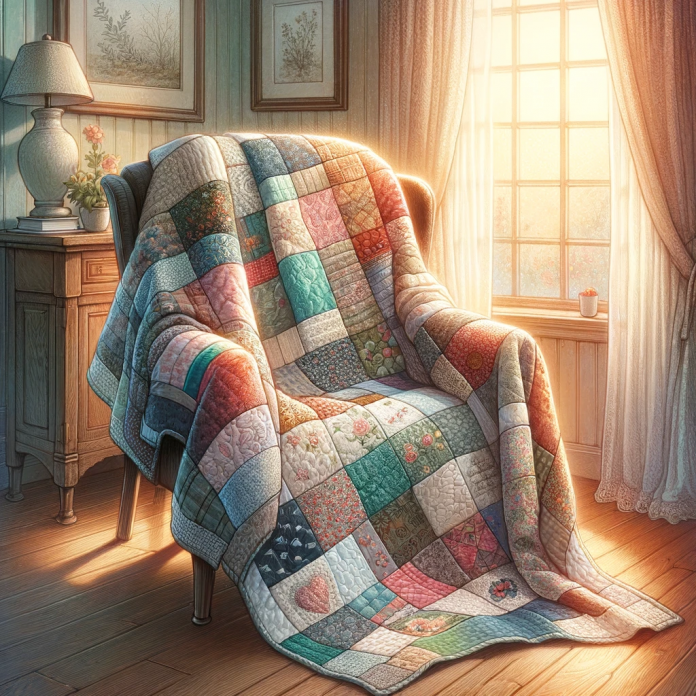Memory quilts, crafted from cherished pieces of clothing or fabric, serve as a comforting tribute to loved ones. They are a tangible way to hold onto memories, and the process of creating them can be a therapeutic journey. This guide will take you through the steps of creating a memory quilt, offering tips and advice along the way.
The Significance of Memory Quilts
Memory quilts are more than just pieces of fabric sewn together. They are a physical manifestation of memories, love, and connection. Each piece of fabric used in the quilt holds a story, a moment, or a memory, making it a deeply personal item.
Creating a memory quilt can be a healing process. It allows you to reflect on the memories associated with the fabric pieces, helping you to process your feelings and emotions. The act of sewing can also be therapeutic, providing a sense of calm and focus.
Choosing the Right Materials
When creating a memory quilt, the fabric pieces you choose are crucial. They should be items that hold significant memories for you. These could be pieces of clothing, blankets, or any other fabric items that have sentimental value.
The type of fabric is also important. Cotton is often the best choice as it is durable and easy to work with. However, you can also use other types of fabric, such as silk or linen, depending on the items you have.
Creating Your Memory Quilt
Creating a memory quilt involves several steps, from planning your design to sewing the pieces together. It requires patience and attention to detail, but the end result is a beautiful, meaningful tribute.
Planning Your Design
Before you start sewing, you need to plan your quilt design. This involves deciding on the size and shape of your quilt, as well as the layout of the fabric pieces. You can create a simple grid pattern, or opt for a more complex design.
When planning your design, consider the size and shape of your fabric pieces. You may need to cut them into squares or rectangles to fit your design. Also, consider the colors and patterns of the fabrics, and how they will look together in the quilt.
Sewing the Pieces Together
Once you have your design planned, you can start sewing the pieces together. Start by sewing the pieces into rows, and then sew the rows together to form the quilt top. Be sure to use a strong, durable thread to ensure your quilt will last.
When sewing, take your time and be careful to maintain straight lines and even seams. This will ensure your quilt looks neat and professional. If you're new to sewing, consider practicing on some scrap fabric first.
Finishing Your Quilt
After sewing the pieces together, you need to finish your quilt. This involves adding a backing and binding, and possibly quilting the top and backing together. You can choose a backing fabric that complements the front, or use a plain fabric to let the memory pieces stand out.
The binding is the final touch, framing your quilt and giving it a finished look. You can use a contrasting color for a bold look, or a matching color for a more subtle effect.
Preserving Your Memory Quilt
Once your memory quilt is complete, you'll want to ensure it lasts for many years. This involves proper care and preservation techniques.
Handling and Storage
Handle your memory quilt with care to prevent damage. Avoid pulling or stretching it, and be careful not to snag it on sharp objects. When storing your quilt, fold it carefully and keep it in a cool, dry place. Avoid storing it in direct sunlight, as this can fade the colors.
It's also a good idea to periodically refold your quilt to prevent creases from becoming permanent. If you're storing it for a long period, consider using acid-free tissue paper to protect the fabric.
Cleaning Your Quilt
Memory quilts require special care when cleaning. Always check the care instructions for each fabric before washing. In general, it's best to hand wash your quilt in cold water with a gentle detergent. Avoid using bleach or fabric softener, as these can damage the fabric.
After washing, lay your quilt flat to dry. Avoid wringing or twisting it, as this can cause the fabric to stretch or tear. If necessary, you can press your quilt with a warm iron to remove wrinkles.
Conclusion
Creating a memory quilt is a meaningful way to pay tribute to loved ones and preserve cherished memories. The process requires time and patience, but the end result is a beautiful, personal item that you can treasure for years to come. With proper care and preservation, your memory quilt can serve as a comforting reminder of the memories it holds.


-banner.png)





